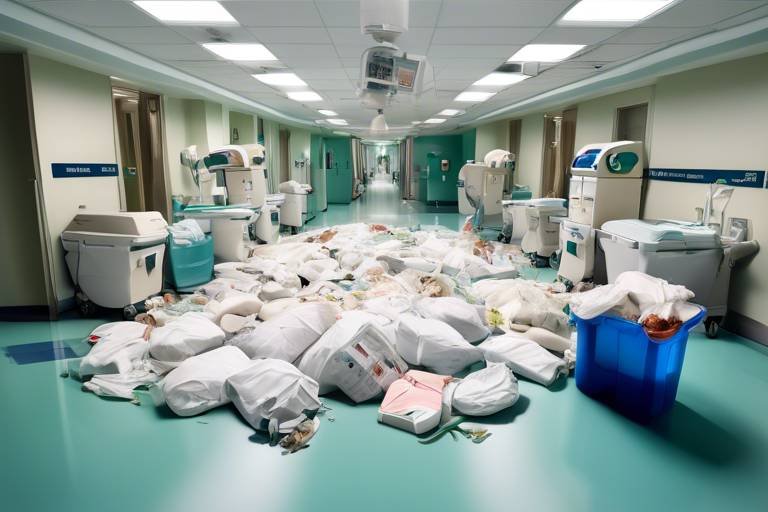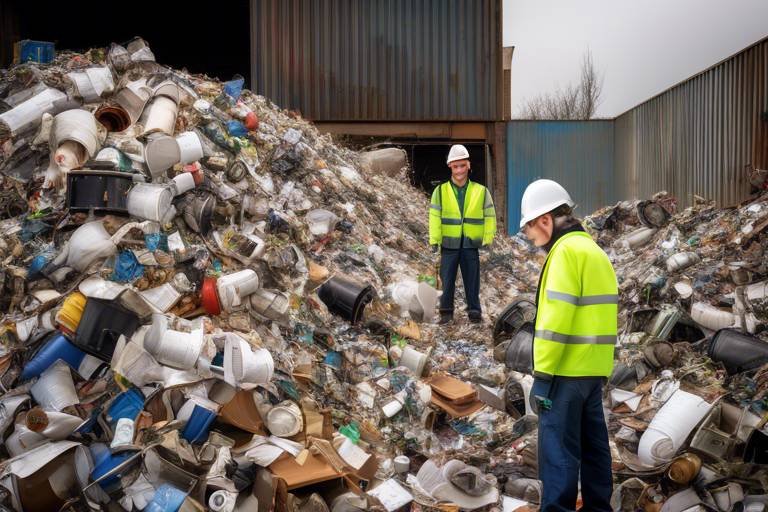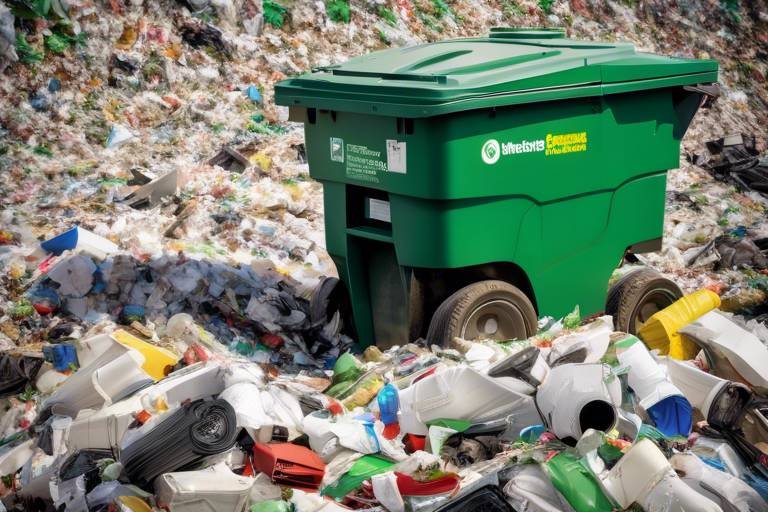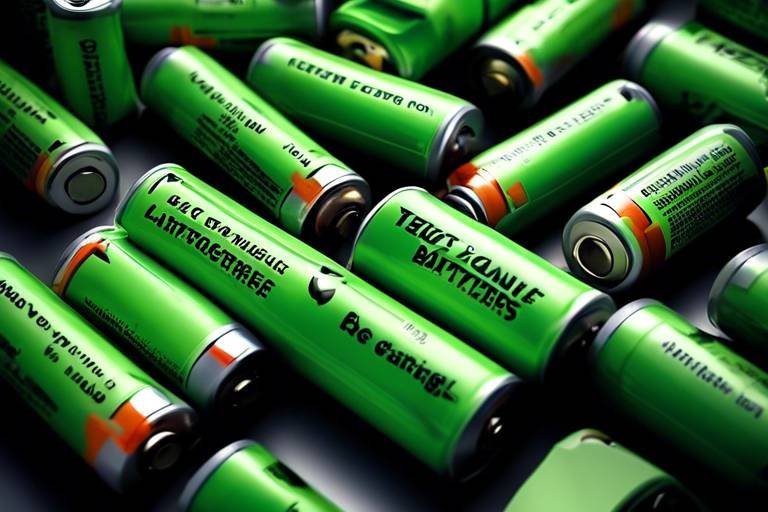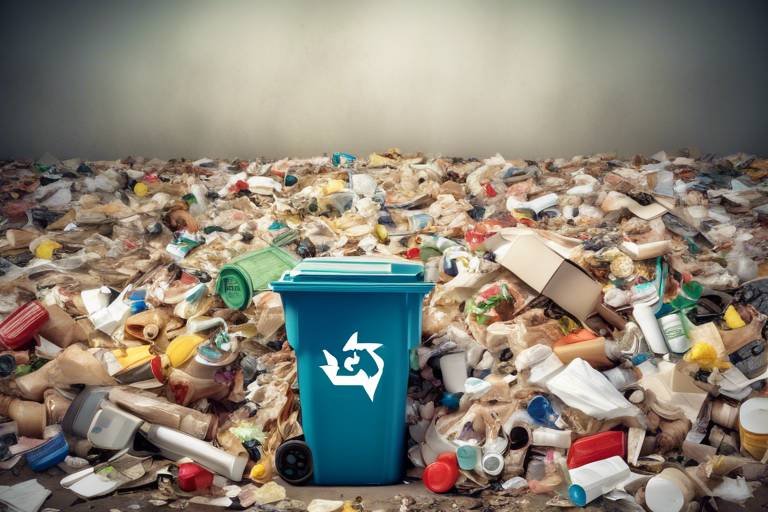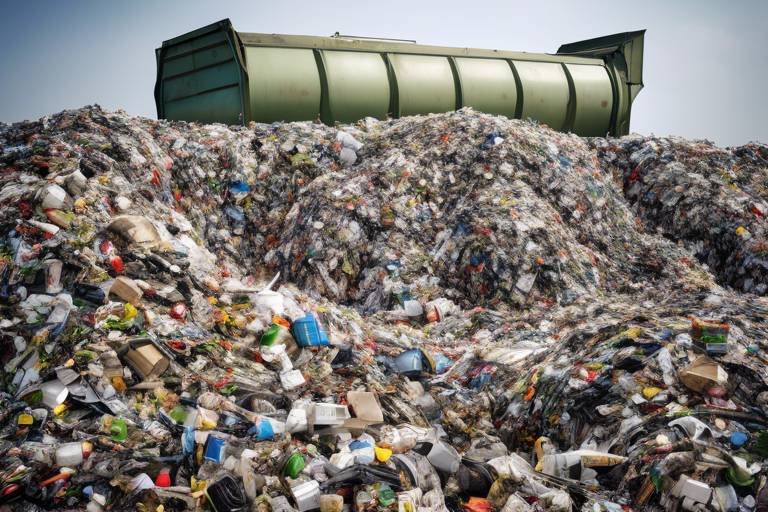What are the Best Practices for Hospital Waste Management?
Managing hospital waste effectively is not just about compliance; it’s about protecting public health and the environment. Hospitals generate a variety of waste, and each type requires a tailored approach for disposal. The best practices for hospital waste management focus on sustainability, safety, and regulatory compliance. By implementing these practices, healthcare facilities can minimize their environmental footprint while ensuring the safety of their staff, patients, and the community.
One of the first steps in effective waste management is understanding the different types of waste generated in healthcare settings. Hospital waste can be broadly categorized into three main types: general waste, hazardous waste, and infectious waste. General waste includes items that are not harmful and can be disposed of with regular trash, such as paper and packaging. Hazardous waste, on the other hand, includes materials that can pose a risk to health or the environment, such as chemicals or pharmaceuticals. Lastly, infectious waste consists of items contaminated with blood or other bodily fluids, which require special handling and disposal methods.
Effective waste management begins with proper waste segregation. This means separating waste at the source to prevent contamination and ensure that each type is disposed of correctly. For instance, hospitals should have clearly labeled bins for each type of waste, making it easier for staff to dispose of materials appropriately. Implementing color-coded systems can enhance this process, where, for example, red bags are designated for infectious waste, while yellow bags are used for hazardous materials. This simple yet effective practice can significantly reduce the risk of accidents and improve overall waste management efficiency.
Another critical aspect of hospital waste management is staff training and education. Healthcare workers must be well-informed about the types of waste they handle, the risks associated with improper disposal, and the protocols for managing waste safely. Developing comprehensive training modules that cover these topics is essential. These modules should include interactive elements such as workshops and hands-on training to engage staff and reinforce learning.
Moreover, ongoing education is vital in this ever-evolving field. Refresher courses should be held regularly to keep staff updated on the latest regulations and best practices. Continuous education not only fosters a culture of safety but also empowers employees to take ownership of their role in waste management. After all, when staff members understand the importance of their actions, they are more likely to adhere to protocols and promote a safer healthcare environment.
Lastly, hospitals must stay informed about regulatory compliance. Adhering to local, national, and international regulations is not just a legal obligation; it's a moral one. Non-compliance can lead to severe repercussions, including fines, legal actions, and damage to a hospital's reputation. Understanding the guidelines set forth by organizations such as the World Health Organization (WHO) and local health departments is crucial. These regulations provide a framework for safe waste management practices and help ensure that healthcare facilities operate within legal boundaries.
In conclusion, the best practices for hospital waste management revolve around understanding waste types, effective segregation, comprehensive staff training, and strict adherence to regulations. By prioritizing these areas, hospitals can not only comply with laws but also contribute to a healthier planet and community.
- What types of waste are generated in hospitals? Hospitals typically generate general, hazardous, and infectious waste.
- Why is waste segregation important? Proper waste segregation minimizes contamination and ensures that waste is disposed of correctly.
- How often should staff training be conducted? Regular training and refresher courses should be held to keep staff informed about best practices.
- What are the consequences of non-compliance? Non-compliance can lead to fines, legal issues, and reputational damage for healthcare facilities.

Understanding Hospital Waste Types
When it comes to managing hospital waste, understanding the different types is absolutely crucial. Think of hospital waste as a complex puzzle, where each piece represents a unique category that requires specific handling and disposal methods. Hospitals generate various waste types, and categorizing them correctly is the first step toward effective management. The three primary categories of hospital waste include general waste, hazardous waste, and infectious waste. Each type has its own characteristics and disposal requirements, which we will explore in detail.
General waste is the most common type found in hospitals. This includes items that are non-hazardous and similar to what you might find in any other workplace, such as paper, plastic packaging, and food waste. Imagine a typical office trash can; that’s the kind of waste general waste represents. It’s important to segregate this type from more dangerous waste to avoid unnecessary complications during disposal.
Next up, we have hazardous waste. This category is a bit more serious and includes materials that can pose risks to human health or the environment. Examples include chemicals, pharmaceuticals, and any materials that could potentially be toxic. Hospitals must handle hazardous waste with extreme caution, often requiring specialized containers and disposal methods. If you think about it, dealing with hazardous waste is like handling a double-edged sword; one wrong move, and it could lead to serious consequences.
Finally, there’s infectious waste, which is perhaps the most critical category to manage effectively. This type of waste includes anything that may be contaminated with blood, bodily fluids, or other pathogens, such as used surgical instruments and soiled linens. The risk associated with infectious waste is significant, as improper handling can lead to the spread of infections. Hospitals must employ strict protocols for the disposal of infectious waste, often using color-coded bags and containers to ensure that staff can easily identify and segregate these materials.
| Type of Waste | Characteristics | Disposal Method |
|---|---|---|
| General Waste | Non-hazardous; similar to household waste | Landfill or recycling |
| Hazardous Waste | Toxic or harmful to health; includes chemicals | Specialized hazardous waste disposal |
| Infectious Waste | Potentially contaminated with pathogens | Incineration or autoclaving |
Understanding these waste types is not just about compliance; it’s about ensuring the safety of both healthcare workers and patients. The implications of mismanagement can be dire, leading to environmental contamination and health risks. By effectively categorizing and managing hospital waste, healthcare facilities can contribute to a safer, more sustainable world.

Regulatory Compliance in Waste Management
When it comes to hospital waste management, regulatory compliance is not just a box to check; it’s a critical aspect that ensures the safety of patients, staff, and the environment. Hospitals generate a variety of waste types, and each type has its own set of regulations that must be adhered to. Failing to comply with these regulations can lead to severe consequences, including hefty fines, legal action, and even damage to a facility's reputation. So, what exactly do hospitals need to comply with?
At the heart of regulatory compliance are the local, national, and international guidelines that govern how different types of waste should be handled. For instance, hazardous waste, which includes materials that can be harmful to human health or the environment, must be treated with utmost care. This is where understanding the regulations becomes essential. Hospitals must develop a comprehensive waste management plan that aligns with these regulations, ensuring that waste is segregated, treated, and disposed of properly.
To give you a clearer picture, let’s break down some of the key regulations governing hospital waste management:
| Regulation Type | Description | Implications of Non-compliance |
|---|---|---|
| Local Regulations | Specific laws set by local health departments regarding waste disposal. | Fines and potential closure of facilities. |
| National Regulations | National standards such as the Resource Conservation and Recovery Act (RCRA) in the U.S. | Legal action and damage to public trust. |
| International Guidelines | Global standards set by organizations like the World Health Organization (WHO). | Increased health risks and environmental damage. |
Understanding these regulations is vital for healthcare facilities. For example, local regulations often dictate how waste is collected and disposed of, while national regulations provide a broader framework that hospitals must follow. International guidelines, on the other hand, offer best practices that can help hospitals improve their waste management strategies. It’s a complex web of rules, but one that’s essential for safeguarding public health.
International Guidelines play a significant role in shaping local practices. Organizations such as the WHO provide a wealth of recommendations that can help hospitals not only meet regulatory requirements but also enhance their operational efficiency. These guidelines often emphasize the importance of waste minimization, segregation, and safe disposal methods.
In summary, regulatory compliance in hospital waste management is not merely about following rules; it’s about fostering a culture of safety and responsibility. Hospitals must remain vigilant in understanding and implementing these regulations to protect not just their patients and staff but also the environment. After all, in the world of healthcare, every small step towards compliance can lead to a significant impact on public health and safety.
- What types of waste are considered hazardous in hospitals? Hazardous waste can include chemicals, pharmaceuticals, and any materials that pose a risk to health or the environment.
- How often should hospitals review their waste management policies? Hospitals should review their policies at least annually or whenever there are changes in regulations or operational procedures.
- What are the consequences of non-compliance with waste management regulations? Non-compliance can lead to fines, legal repercussions, and damage to the hospital's reputation.

International Guidelines
In the realm of healthcare, the management of waste is not just a local concern; it has become a global imperative. Various international organizations have laid down guidelines that serve as a framework for safe hospital waste management practices. These guidelines are crucial for ensuring that healthcare facilities operate in a manner that is not only compliant with regulations but also environmentally responsible. Among the most influential organizations is the World Health Organization (WHO), which has developed comprehensive recommendations aimed at minimizing health risks and preserving the environment.
The WHO emphasizes that effective waste management must be integrated into the overall healthcare delivery system. This means that hospitals should not view waste management as an isolated activity but rather as an essential component of their operational strategy. The WHO guidelines categorize waste into different types and suggest specific disposal methods for each category. For instance, infectious waste requires incineration or autoclaving, while non-hazardous waste can be disposed of in regular landfills if properly treated.
Furthermore, the United Nations Environment Programme (UNEP) also plays a significant role in promoting sustainable waste management practices. They advocate for the reduction of waste generation at the source and the implementation of recycling programs wherever possible. Hospitals are encouraged to adopt a circular economy approach, which not only reduces waste but also conserves resources. The UNEP guidelines stress the importance of engaging stakeholders, including healthcare workers and the community, in waste management initiatives to foster a culture of sustainability.
In addition to the WHO and UNEP, other international bodies like the International Solid Waste Association (ISWA) provide valuable resources and best practices for waste management. They offer training programs and workshops that equip healthcare professionals with the knowledge necessary to implement effective waste management strategies. The collaboration of these organizations highlights the importance of a unified approach to waste management, ensuring that hospitals worldwide adhere to high standards.
It's important to note that while international guidelines provide a solid foundation, the implementation of these practices must be tailored to local contexts. Each region has its own unique challenges and resources, making it essential for hospitals to adapt these guidelines to fit their specific needs. For example, a hospital in a developing country may face different logistical challenges compared to one in a developed nation. Therefore, understanding local conditions and regulations is vital for the successful application of international guidelines.
In summary, international guidelines serve as a crucial roadmap for hospital waste management, offering strategies that promote safety, compliance, and environmental protection. By adhering to these guidelines, healthcare facilities can significantly reduce their ecological footprint and enhance their operational efficiency. As we move forward, the integration of these international standards into local practices will be key to achieving sustainable healthcare systems worldwide.
- What are the main types of hospital waste? Hospital waste is typically categorized into general, hazardous, and infectious waste, each requiring different handling and disposal methods.
- Why is compliance with international guidelines important? Compliance helps ensure the safety of healthcare workers, patients, and the environment while reducing the risk of legal penalties.
- How can hospitals implement these guidelines effectively? By tailoring international guidelines to local conditions and investing in staff training and education.
- What role do international organizations play in waste management? They provide frameworks, resources, and training to help healthcare facilities adopt best practices for waste management.

WHO Recommendations
The World Health Organization (WHO) plays a pivotal role in shaping global health policies, particularly when it comes to managing healthcare waste. The organization has laid down comprehensive recommendations aimed at minimizing the risks associated with hospital waste. These guidelines are not just mere suggestions; they are essential for maintaining public health and safeguarding the environment. The WHO emphasizes the need for a systematic approach to waste management that encompasses all aspects, from waste generation to disposal.
One of the primary recommendations from the WHO is the segregation of waste at the source. This means that healthcare facilities should categorize waste into different types right from the moment it is generated. The WHO suggests that waste be divided into at least four categories: general waste, hazardous waste, infectious waste, and sharps. By segregating waste effectively, hospitals can significantly reduce the volume of hazardous materials that need special handling and disposal, thus minimizing the risk of exposure to healthcare workers and the community.
In addition to waste segregation, the WHO also highlights the importance of proper training for healthcare staff. According to their guidelines, all personnel involved in waste management should receive adequate training to ensure they understand the protocols and the potential risks associated with improper waste handling. This training should not be a one-time event but rather an ongoing process that includes refresher courses and updates on best practices. The WHO recommends that hospitals develop tailored training modules that address their specific waste management challenges.
Another key aspect of the WHO recommendations is the establishment of a comprehensive waste management plan. This plan should outline the procedures for waste collection, transportation, treatment, and disposal. It should also include contingency measures for emergencies, such as spills or accidents involving hazardous waste. By having a well-structured waste management plan, healthcare facilities can ensure compliance with local and international regulations while promoting sustainability.
Furthermore, the WHO encourages hospitals to adopt innovative waste management technologies. These technologies can range from advanced incineration methods to environmentally friendly alternatives such as autoclaving and chemical treatment. The goal is to reduce the environmental footprint of healthcare waste while ensuring that waste is treated in a manner that minimizes health risks. The WHO also stresses the importance of monitoring and evaluating waste management practices to ensure continuous improvement and adherence to established guidelines.
In summary, the WHO recommendations serve as a crucial framework for effective hospital waste management. By following these guidelines, healthcare facilities can not only protect public health but also contribute to a more sustainable future. The WHO's emphasis on segregation, training, planning, and innovation underscores the need for a proactive approach to waste management in healthcare settings.
Q: Why is waste segregation important in hospitals?
A: Waste segregation is crucial because it minimizes the risk of contamination, ensures proper disposal methods are used, and reduces the volume of hazardous waste that requires special handling.
Q: What types of waste should hospitals segregate?
A: Hospitals should segregate waste into at least four categories: general waste, hazardous waste, infectious waste, and sharps.
Q: How often should hospital staff receive training on waste management?
A: Staff should receive initial training upon hiring and ongoing training through refresher courses to keep them updated on best practices and regulations.
Q: What technologies can be used for hospital waste management?
A: Hospitals can use various technologies, including advanced incineration, autoclaving, and chemical treatment, to manage waste effectively while minimizing environmental impact.

Local Regulations
Understanding local regulations is vital for compliance in hospital waste management. Each region has its own set of laws and guidelines that dictate how healthcare facilities should handle waste. These regulations are designed not only to protect public health but also to safeguard the environment from the potentially harmful effects of improper waste disposal. For instance, local authorities may require hospitals to categorize their waste into specific types, such as general, hazardous, and infectious waste, and follow stringent protocols for the disposal of each category.
Moreover, local regulations often outline the responsibilities of healthcare facilities, including the need for regular audits and reporting waste management practices. Failure to comply with these regulations can result in severe penalties, including hefty fines or even the suspension of a facility's operating license. This is why it’s essential for hospitals to stay informed about the laws that apply to their specific location.
In many cases, local regulations may also align with national and international guidelines, but there can be significant variations. For example, some regions might have stricter rules regarding the incineration of medical waste, while others may focus more on recycling initiatives. Therefore, healthcare facilities must ensure they are not only compliant with broader laws but also with specific local mandates.
To illustrate the importance of local regulations, consider the following table that outlines common local regulatory requirements for hospital waste management:
| Regulatory Requirement | Description |
|---|---|
| Waste Segregation | Mandatory separation of waste into categories to facilitate proper disposal. |
| Documentation | Record-keeping of waste generated, disposed of, and recycled. |
| Training | Regular training sessions for staff on waste management protocols. |
| Inspections | Periodic inspections by local authorities to ensure compliance. |
In summary, local regulations play a pivotal role in shaping hospital waste management practices. By adhering to these guidelines, healthcare facilities not only fulfill their legal obligations but also contribute to a safer and healthier environment for the communities they serve.
- What are the consequences of non-compliance with local waste management regulations? Non-compliance can lead to fines, legal action, and damage to the hospital's reputation.
- How can hospitals stay updated on local regulations? Hospitals can stay informed by subscribing to local health department newsletters and participating in relevant workshops.
- Are there resources available to assist in understanding local regulations? Yes, many local health departments provide resources and guidelines for healthcare facilities.

Best Practices for Waste Segregation
Effective waste segregation is not just a regulatory requirement; it’s a crucial practice that can significantly impact the safety and efficiency of hospital waste management. Imagine a bustling hospital, where every second counts, and every decision can affect patient care and environmental health. By ensuring that waste is properly segregated at the source, healthcare facilities can minimize contamination risks and streamline disposal processes. So, what does effective waste segregation entail?
First and foremost, it is essential to establish clear categories for waste within the hospital. Generally, hospital waste can be divided into several key types: general waste, hazardous waste, and infectious waste. Each category has specific characteristics and disposal methods, and understanding these differences is vital for effective management. For instance, general waste can often be treated like regular municipal waste, while infectious and hazardous wastes require special handling and disposal procedures to prevent health risks.
To facilitate this process, hospitals should implement a color-coded waste segregation system. This system can include:
- Black bags for general waste
- Yellow bags for infectious waste
- Red bags for hazardous waste
- Blue or clear bags for recyclable materials
By using distinct colors, staff can quickly identify the appropriate disposal method, reducing the chances of cross-contamination. Moreover, signage should be prominently displayed in waste disposal areas, clearly indicating which type of waste goes where. Think of it as a traffic light system for waste: green for go (recycling), red for stop (hazardous), and yellow for caution (infectious).
Training staff on these segregation practices is equally important. All hospital employees, from doctors to janitorial staff, should receive comprehensive training on the importance of waste segregation and the specific protocols to follow. Regular workshops can be organized to keep everyone updated on best practices and new regulations. The goal is to create a culture of sustainability and safety where every team member understands their role in waste management.
Furthermore, regular audits and checks can help ensure compliance with waste segregation practices. Hospitals should establish a monitoring system to evaluate how well staff are adhering to waste segregation protocols. This can involve random checks of waste disposal areas and feedback sessions to discuss any issues that may arise. By actively monitoring waste segregation practices, hospitals can identify areas for improvement and provide additional training where necessary.
In conclusion, implementing best practices for waste segregation is essential for any healthcare facility aiming to enhance its waste management efforts. By categorizing waste, utilizing a color-coded system, training staff, and conducting regular audits, hospitals can not only comply with regulations but also contribute to a healthier environment. After all, effective waste management is a collective responsibility, and every individual’s effort counts towards a sustainable future.
- What is the most common type of hospital waste? The most common type of hospital waste is general waste, which includes non-hazardous materials that can be disposed of with regular municipal waste.
- Why is waste segregation important in hospitals? Waste segregation is crucial as it helps prevent contamination, reduces health risks, and ensures that hazardous materials are disposed of safely.
- How often should staff be trained on waste management practices? Staff should undergo initial training upon hiring and participate in refresher courses at least annually to stay updated on best practices.

Training and Education for Staff
When it comes to hospital waste management, education and training for staff are absolutely essential. Imagine trying to navigate a complex maze without a map—this is how healthcare workers feel when they are not adequately trained in waste management practices. The stakes are high; improper handling of waste not only poses a risk to the environment but can also jeopardize patient safety and public health. Therefore, investing in comprehensive training programs is not just a good idea—it's a necessity.
Effective training programs should be tailored to the unique environment of a hospital. This means that they must address the various types of waste generated, which can include everything from general waste to hazardous materials and infectious waste. By understanding the specific characteristics of each waste type, staff can make informed decisions about how to handle and dispose of them properly. For instance, did you know that infectious waste must be treated differently than regular trash? This is where proper training comes into play, ensuring that every staff member knows what to do in any given situation.
Moreover, a well-structured training program should include several key components:
- Understanding Waste Types: Staff should be educated on the different categories of waste and their associated risks.
- Segregation Techniques: Training should focus on how to segregate waste at the source to minimize contamination.
- Disposal Procedures: Clear guidelines on how to dispose of various types of waste safely and legally.
- Emergency Protocols: Staff should know what to do in case of an accidental spill or exposure.
But the learning doesn’t stop after the initial training session. Just like a plant needs regular watering to thrive, hospital staff require ongoing education to stay updated on the latest best practices in waste management. This is where refresher courses come into play. These courses can be designed to reinforce what staff learned initially and introduce new regulations or technologies that may have emerged since their last training. After all, the landscape of healthcare is constantly evolving, and so should the knowledge of those working within it.
Additionally, creating a culture of continuous learning can significantly enhance compliance and awareness among healthcare workers. When staff feel empowered and knowledgeable about their responsibilities, they are more likely to take ownership of their actions and prioritize safe waste management practices. This cultural shift can lead to a noticeable improvement in waste management outcomes within the hospital.
To summarize, effective training and education for hospital staff are critical components of successful waste management. By developing comprehensive training modules that cover the essentials and providing ongoing education, healthcare facilities can ensure that their staff are well-equipped to handle waste responsibly. This not only protects the environment but also promotes a safer healthcare setting for everyone involved.
- Why is staff training important for hospital waste management?
Staff training is crucial because it equips healthcare workers with the knowledge to handle different types of waste safely, thereby protecting both public health and the environment. - What are the key topics that should be covered in training?
Training should cover waste types, segregation techniques, disposal procedures, and emergency protocols. - How often should refresher courses be conducted?
Refresher courses should be conducted regularly, ideally annually, to keep staff updated on best practices and new regulations.

Developing Training Modules
Creating effective training modules for hospital waste management is not just a good idea; it's a necessity. These modules serve as the backbone of any waste management program, ensuring that every staff member understands their role in maintaining a safe and compliant environment. To start, the modules should be tailored to the specific needs of the hospital, considering the types of waste generated and the existing protocols in place. Think of it as crafting a custom-fit suit—one size does not fit all!
When developing these training modules, it's essential to include various components that engage and educate staff effectively. Here are some key elements to consider:
- Clear Objectives: Each module should have defined learning outcomes. What should participants know or be able to do by the end of the training? Setting clear goals helps in measuring the effectiveness of the training.
- Interactive Content: Incorporating interactive elements, such as quizzes, case studies, and role-playing scenarios, can enhance engagement. For instance, a scenario where staff must decide how to segregate different types of waste can be both educational and fun!
- Visual Aids: Using diagrams, videos, and infographics can make complex information more digestible. Visual aids can illustrate proper waste segregation techniques or showcase the consequences of improper disposal.
- Real-Life Examples: Including case studies from other healthcare facilities can provide context and highlight the importance of effective waste management. Sharing success stories or lessons learned from failures can inspire staff to take the training seriously.
Additionally, it's crucial to integrate assessments throughout the training. These assessments can take various forms, such as short quizzes at the end of each section or practical demonstrations of waste segregation. This not only reinforces learning but also identifies areas where additional training may be necessary.
Another vital aspect of developing training modules is ensuring that they are accessible to all staff members. Consider offering training in multiple formats—online, in-person, and even hybrid options. This flexibility allows everyone, from busy nurses to administrative staff, to participate without disrupting their schedules.
Finally, don’t forget about the importance of feedback. After the training sessions, gather feedback from participants to refine and improve future modules. This iterative process ensures that the training remains relevant and effective, adapting to any changes in regulations or hospital practices.
Q1: How often should training modules be updated?
A1: Training modules should be reviewed and updated at least annually or whenever there are significant changes in regulations or hospital protocols.
Q2: Who should be responsible for developing these training modules?
A2: Ideally, a collaborative team including waste management experts, healthcare professionals, and training specialists should be involved in the development process.
Q3: Are there any specific certifications required for staff involved in waste management?
A3: While specific certifications may vary by region, it’s essential that all staff receive training that meets local regulations and guidelines.

Ongoing Education and Refresher Courses
In the ever-evolving landscape of healthcare, ongoing education and refresher courses are not just beneficial; they are essential. As new regulations, technologies, and best practices emerge, hospital staff must stay informed to ensure that waste management protocols are not only followed but also optimized for safety and efficiency. Think of it like keeping your car in top shape; regular maintenance prevents breakdowns and costly repairs. Similarly, regular training sessions help healthcare workers avoid mistakes that could lead to serious health risks or environmental hazards.
One of the most effective ways to implement ongoing education is through structured refresher courses. These courses can be tailored to address specific areas of hospital waste management, such as:
- Waste Segregation: Understanding the differences between general, hazardous, and infectious waste.
- Compliance Updates: Keeping staff informed about changes in local and national regulations.
- New Technologies: Training on the latest waste disposal technologies and methods.
Moreover, refresher courses should not be a one-time event. Instead, they should be part of a continuous learning culture. Hospitals can establish a schedule for these courses, ensuring that all staff members participate regularly. For instance, a hospital might implement a bi-annual training program where employees can engage in hands-on activities that reinforce their knowledge and skills. This not only improves retention but also fosters a sense of community and teamwork among staff.
Furthermore, it’s vital to incorporate feedback mechanisms into these training programs. By soliciting input from participants, hospitals can identify areas that need more focus and adapt their training materials accordingly. This responsiveness to staff needs enhances the effectiveness of the training and ensures that it remains relevant and engaging.
In conclusion, ongoing education and refresher courses are indispensable in maintaining high standards in hospital waste management. By investing in their staff's knowledge and skills, healthcare facilities not only comply with regulations but also contribute to a safer environment for patients, staff, and the community at large. The journey of learning never truly ends; it’s a continuous cycle that ultimately leads to better healthcare practices.
Q1: Why are refresher courses important in hospital waste management?
A1: Refresher courses keep staff updated on the latest regulations, technologies, and best practices, ensuring compliance and safety in waste management.
Q2: How often should refresher courses be conducted?
A2: Ideally, refresher courses should be conducted at least bi-annually to ensure staff remain informed and engaged.
Q3: What topics should be covered in these courses?
A3: Key topics include waste segregation, compliance updates, and new technologies in waste disposal.
Q4: How can hospitals assess the effectiveness of their training programs?
A4: Hospitals can use feedback surveys and assessments to gather input from staff and identify areas for improvement in their training programs.
Frequently Asked Questions
- What types of waste are generated in hospitals?
Hospitals generate various types of waste, primarily categorized into general waste, hazardous waste, and infectious waste. General waste includes non-hazardous items like paper and food waste, while hazardous waste can contain chemicals or pharmaceuticals. Infectious waste, on the other hand, poses a risk of infection and must be handled with utmost care.
- Why is waste segregation important in hospitals?
Waste segregation is crucial because it minimizes the risk of contamination and ensures that each type of waste is disposed of correctly. Proper segregation helps in protecting healthcare workers, patients, and the environment from potential hazards associated with improper waste disposal.
- What regulations govern hospital waste management?
Hospital waste management is governed by a variety of local, national, and international regulations. These regulations are designed to ensure safe disposal practices and compliance with health standards. Non-compliance can lead to severe penalties, including fines and legal actions.
- How can hospitals ensure compliance with waste management regulations?
Hospitals can ensure compliance by regularly reviewing and updating their waste management policies, conducting staff training, and staying informed about changes in regulations. Engaging with local regulatory bodies can also provide valuable insights into best practices.
- What role does staff training play in waste management?
Staff training is essential for effective waste management. It equips healthcare workers with the knowledge and skills needed to handle waste properly, understand the risks associated with different types of waste, and follow established protocols. Regular training sessions and refresher courses help maintain high standards and compliance.
- What are some best practices for hospital waste disposal?
Best practices for hospital waste disposal include proper waste segregation at the source, using clearly labeled containers, regular staff training, and adhering to local regulations. Additionally, hospitals should develop a waste management plan that outlines procedures for handling, transporting, and disposing of waste safely.
- How can hospitals improve their waste management practices?
Hospitals can improve their waste management practices by implementing comprehensive training programs, investing in better waste segregation technologies, and fostering a culture of sustainability. Regular audits and feedback from staff can also help identify areas for improvement.

